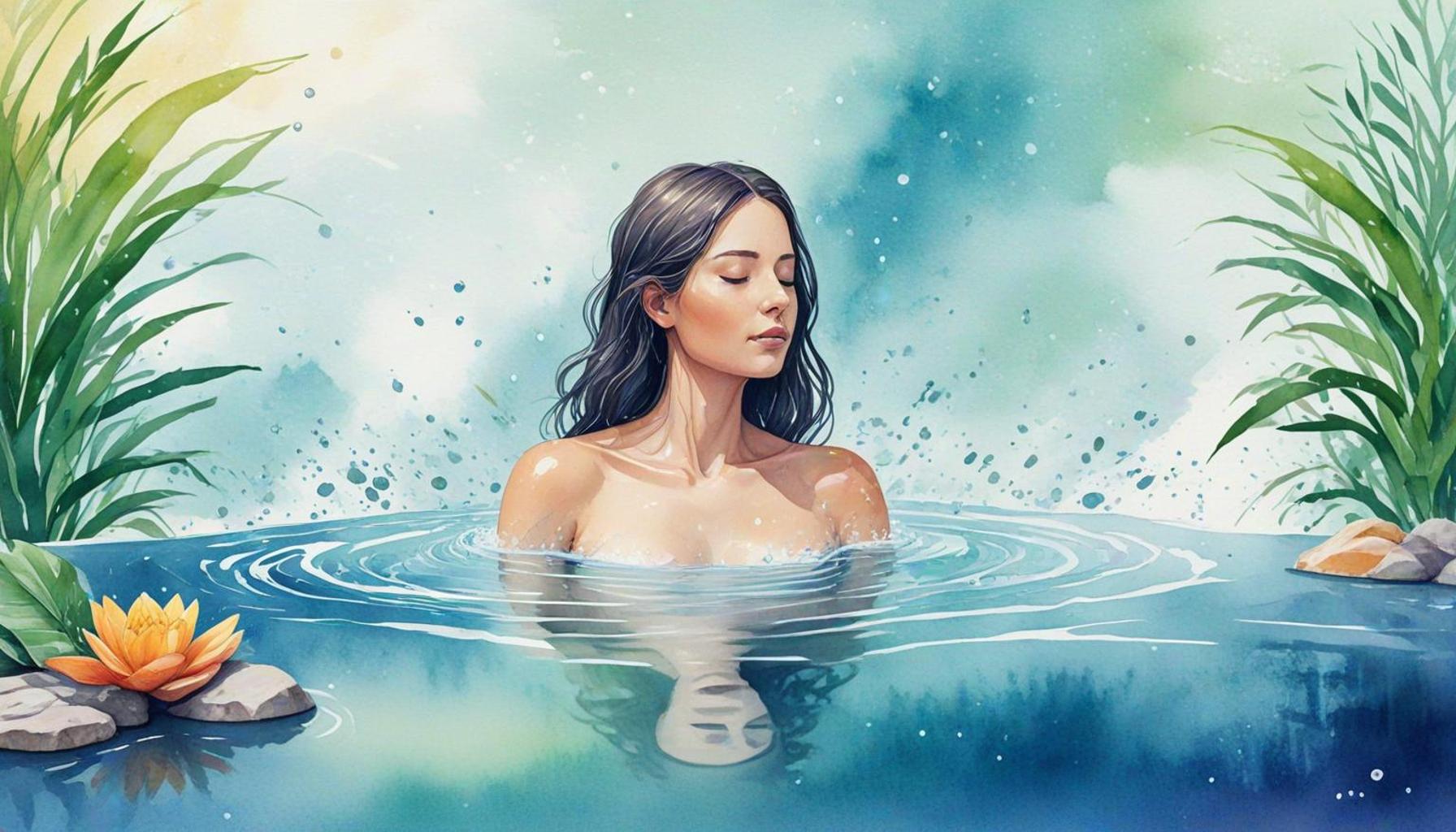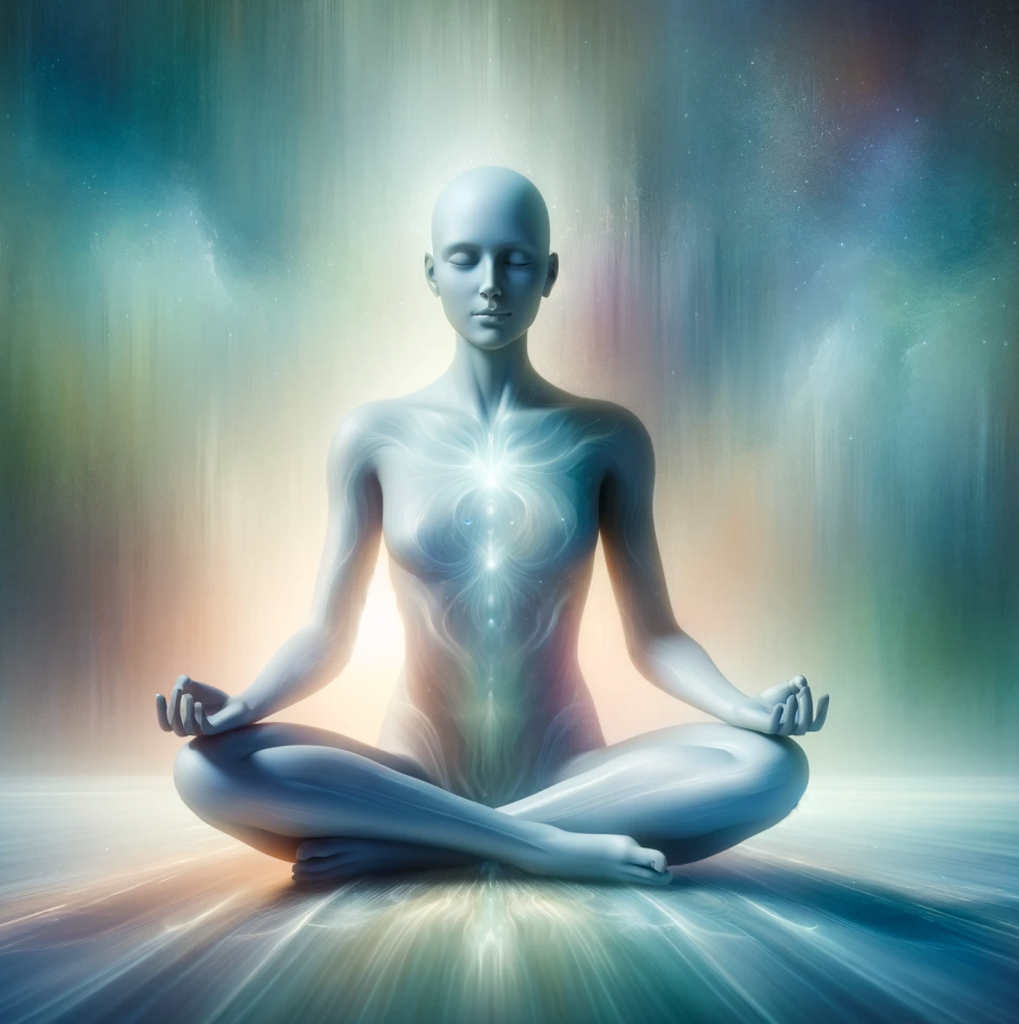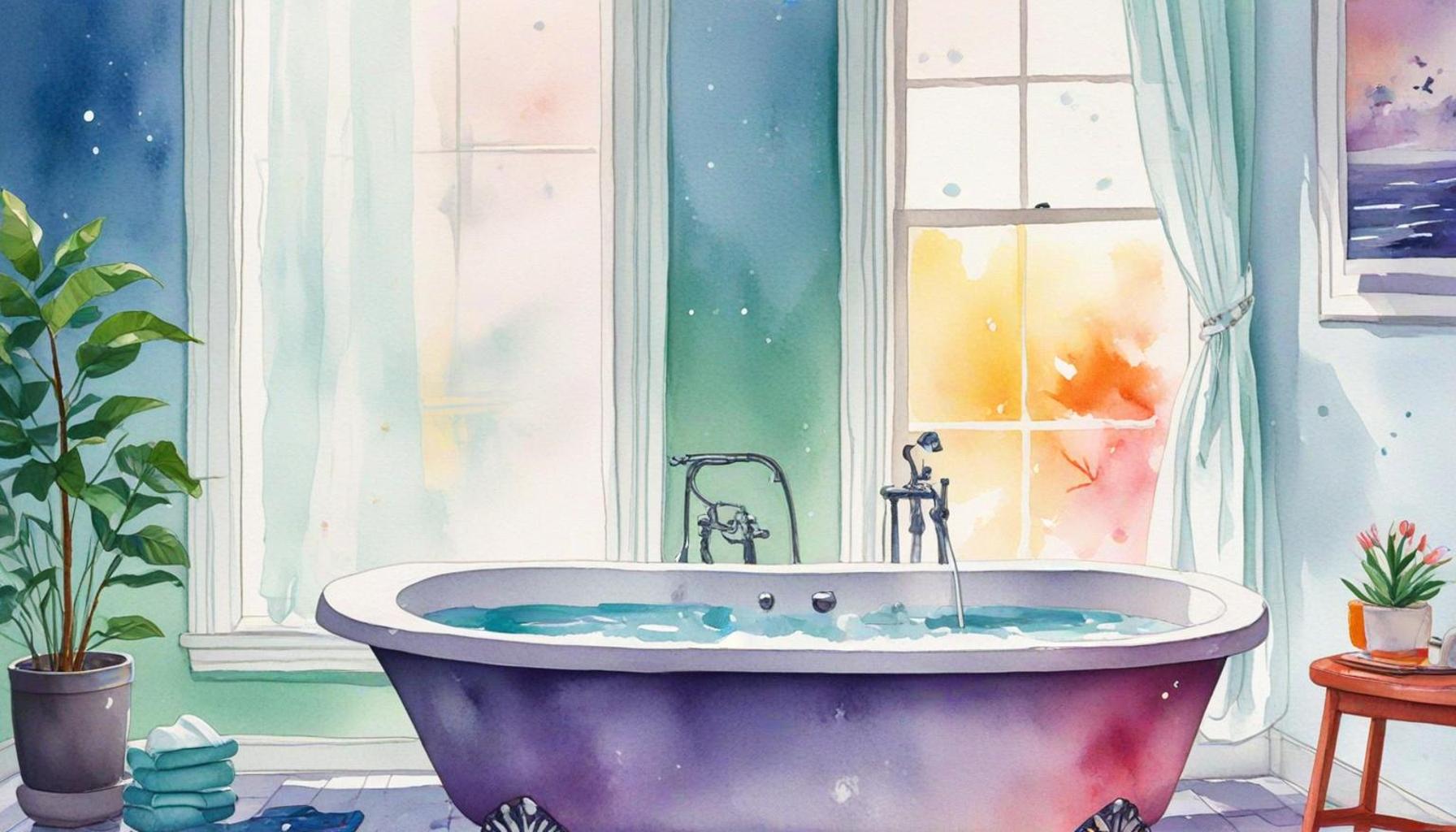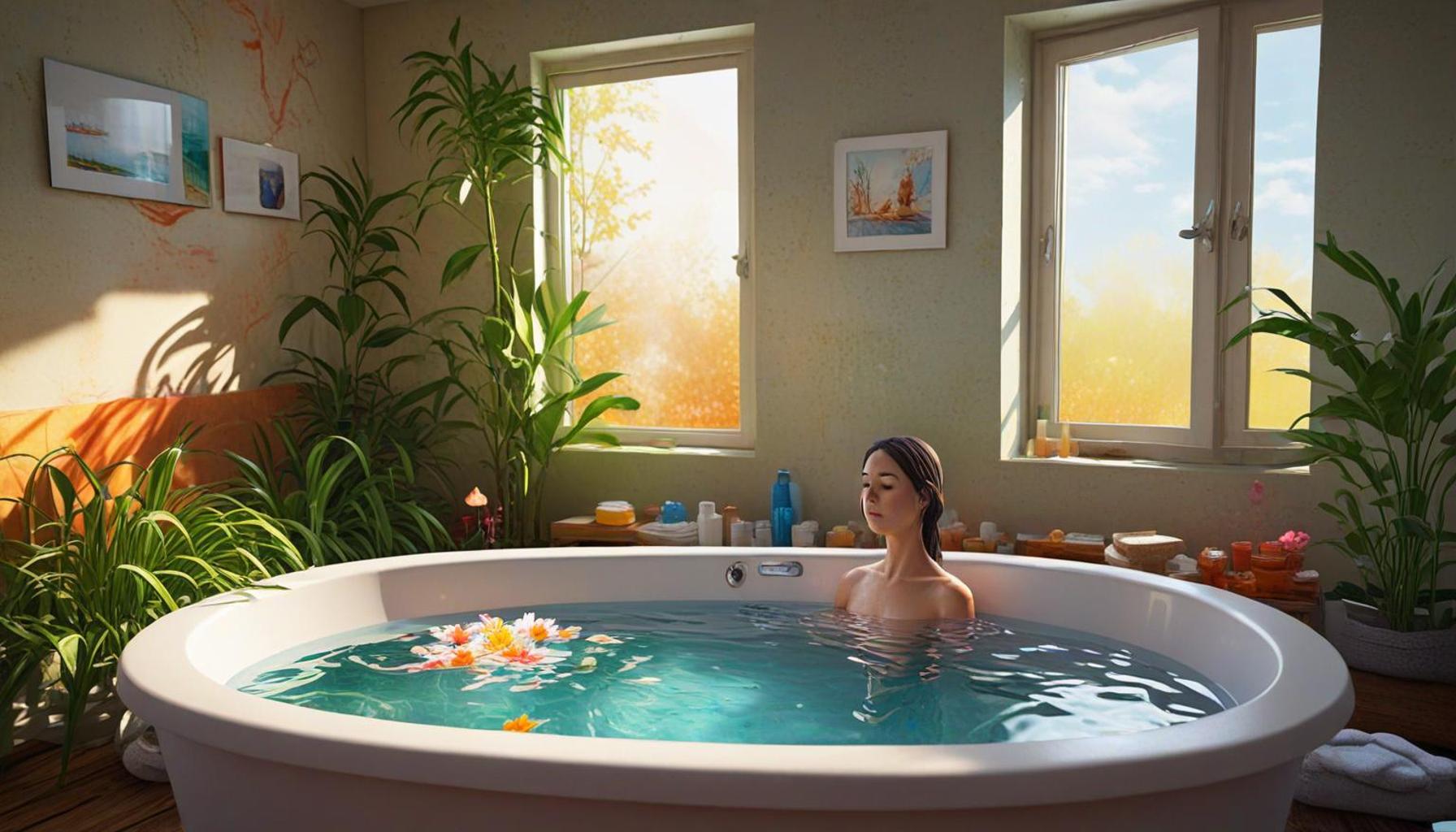Cultivating Sensory Awareness with Textures and Sensations of Water in Bath Meditation

Exploring the Benefits of Water in Meditation
The practice of bath meditation invites individuals to experience a remarkable fusion of calm and sensory delight. As you sink into a warm bath, the enveloping water not only provides comfort but also serves as a powerful tool for enhancing your meditation experience. This serene environment can awaken your senses and guide you toward a deeper state of awareness.
Engaging with water while meditating offers numerous advantages that can significantly enrich your mental and emotional landscape. For instance:
- Heightening your awareness of touch: Different water temperatures can evoke varied sensations on your skin. The contrast between warm and cooler water helps you become acutely aware of your body’s responses, enabling a greater understanding of physical sensations.
- Stimulating other senses: The gentle sound of water splashing or trickling creates a calming auditory backdrop. Visually, the reflections on the water’s surface and the surrounding environment can create a peaceful ambiance, encouraging mindfulness.
- Promoting relaxation: Immersing yourself in water can activate the body’s relaxation response, reducing anxiety and stress. This physiological change often leads to enhanced emotional clarity and introspection, allowing you to process thoughts and feelings more effectively.
In Nigeria, people have long recognized the significance of water in their lives, which adds a rich cultural layer to the practice of bath meditation. For example, during the rainy season, many individuals revel in the refreshing experience of bathing in rivers, which are not only cooling but also invigorating. Similarly, during the harmattan, a warm bucket bath can be particularly soothing, providing a stark contrast to the dry, chilly air and serving as a comforting ritual amidst the seasonal transition.
This article aims to delve deeper into enhancing sensory awareness within your meditation routine. By embracing the various textures and sensations water provides, you open the door to new dimensions of relaxation and mindfulness. From the rippling surface of a river to the tranquil stillness of a bathtub, your connection with water can transform an ordinary bathing ritual into a holistic and rejuvenating experience.
Furthermore, we will explore practical methods for incorporating sensory elements into your practice. Expect to discover insights that not only enhance your meditation but also add a layer of depth to your overall well-being, leading you towards a more mindful lifestyle.

SEE ALSO: Click here to read another article
Cultivating a Deeper Connection Through Textures and Sensations
To fully embrace the practice of bath meditation, it is essential to engage with the unique textures and sensations that water offers. This engagement not only enhances the meditative experience but also facilitates a profound connection between the mind and body. The simple act of bathing transforms into a luxurious sensory exploration, allowing you to cultivate awareness in ways you might not have previously considered.
The water’s touch can vary in myriad ways, from the velvety caress of warm water to the bracing sensation of colder liquid flowing over your skin. Each variety introduces a different tactile experience that can evoke multiple emotional responses. Consider experimenting with different bathing environments, such as:
- Warm baths: The soothing warmth envelops your body, encouraging muscle relaxation and comfort. This peaceful sensation can help you let go of accumulated stress, guiding you to a meditative mindset.
- Cold water exposure: An invigorating splash of cold water can sharpen your senses and heighten your awareness, providing a refreshing contrast that awakens dormant energy. This practice is especially invigorating, making it a valuable step in your meditation.
- Textured experiences: Consider the difference between a smooth bath with bubble bath foam versus a natural river’s currents. Each environment requires you to adapt and respond to varying sensations, ultimately leading to enhanced bodily awareness.
In Nigeria, the varied ecosystems provide an exceptional backdrop for exploring these textures. For example, during a visit to a local river or stream, you can engage with the cool, flowing water and feel the pebbles beneath your feet. This connection with nature further enriches your meditative practice. Each droplet and ripple becomes a point of focus, drawing attention to the intricate sensations that may be easily overlooked in our fast-paced lives.
Incorporating elements of sensory awareness into your meditation routine opens up a path toward greater mindfulness. By appreciating the intricate textures of water and the sensations accompanying them—whether from the gentle wave in a bathtub or the spirited cascades of a waterfall—you learn to recognize how these interactions can reflect inner states of being. The goal is not only to observe these sensations but to gracefully immerse yourself within them, cultivating a harmonious relationship with your surroundings.
As you continue to practice this form of meditation, you may discover that your relationship with water evolves. It becomes not just a medium for cleansing but a vehicle for deeper spiritual growth and self-awareness. This journey is about fostering an appreciation for the environmental elements around you, which can lead to a more mindful way of living that resonates through every aspect of your life.
Cultivating Sensory Awareness with Textures and Sensations of Water in Bath Meditation
The practice of bath meditation offers a unique opportunity to immerse oneself in textures and sensations that can elevate the meditative experience. The rhythmic sounds of water cascading and the delicate touch of warm water can help deepen relaxation and mindfulness. Engaging with the properties of water—its temperature, movement, and fluidity—enables practitioners to tap into their senses, enhancing the overall meditative experience.
| Category | Advantages |
|---|---|
| Enhanced Relaxation | The soothing nature of water creates a serene environment, promoting deep relaxation. |
| Heightened Awareness | Focusing on the textures and sensations enriches mindfulness, allowing for greater connection to the present moment. |
By incorporating the element of water into your meditation practice, you can foster a greater sense of tranquility and presence. The physical sensations experienced during bath meditation serve as reminders to stay grounded, making it an effective way to alleviate stress. Moreover, integrating various water textures, such as the feel of bubbles or the coolness of splashes, can energize the body and awaken the senses. This multifaceted approach not only enhances relaxation but also transforms meditation into a holistic sensory journey.
SEE ALSO: Click here to read another article
Exploring the Healing Properties of Water in Bath Meditation
The incorporation of water in bath meditation is not merely a pleasurable experience but also a profound way to access its myriad healing properties. Water has long been revered not only for its physical cleansing attributes but also for its calming and healing capabilities. In the Nigerian context, indigenous practices often emphasize the sacred nature of water as a source of life and healing, adding layers of meaning to your meditation experience.
The therapeutic effects of water can be felt through its virtual, tactile sensations. Engaging with water encourages release and renewal. As you practice bath meditation, consider these healing aspects:
- Aromatherapy Fusion: Infusing your bath with natural essential oils can transform your sensory experience. The aromatic infusion of local plants such as eucalyptus and shea can enhance your awareness and deepen relaxation. Traditional Nigerian herbs can also provide a nostalgic comfort, connecting your meditation to cultural heritage.
- Buoyancy and Release: The act of floating in warm water not only relieves physical tension but helps to achieve a state of weightlessness. This can lead to a metaphorical shedding of burdens and worries, making way for clarity and mental tranquility. Consider submerging fully, allowing the buoyancy of water to cradle you while embracing mindfulness.
- Fluid Movement: Engage in gentle movements like swaying, stretching, or simply allowing your body to be shaped by the water’s flow. This soft connection allows your mind to drift and find rhythm within the sensory embrace of the water, ultimately fostering a deeper meditative state.
Enhancing your meditation practice with mindful breathing while exploring your bath can amplify your sensory experience. Each breath can be synchronized with the sensations of water touching your skin, followed by a gentle exhale that encourages you to release tension. Practicing this can help illuminate the connection between your breath, body, and the water that envelops you.
Local Water Rituals as Sources of Inspiration
Every culture maintains its unique relationship with water, and Nigeria is rich with stories and rituals that revolve around this natural element. From the annual Oshun-Osogbo Festival, where devotees immerse themselves in sacred waters, to personal rites performed in rivers, these practices can inspire your own meditation techniques. Each ritual serves as a reminder of water’s dual nature—both a source of nourishment and a catalyst for transformation.
Recreating local water rituals can bring an entirely new dimension to your bath meditation. For instance, incorporating traditional songs or mantras as you immerse in the water can help invoke a sense of community and connection to lineage while enhancing your sensory awareness. As you sing softly or chant, observe how the vibrations resonate through the water, creating a harmonious atmosphere that feeds the soul.
Ultimately, nurturing this relationship with water fosters not only sensory awareness but also emotional depth. The act of meditation within water isn’t merely a practice of relaxation but rather an exploration into the profound interconnectedness of elements and your existence. By incorporating diverse elements such as local practices, breath awareness, and natural textures, you can cultivate a transformative experience that enriches both your mind and spirit.
RECOMMENDED: Check out this similar article
Embracing Water’s Transformative Powers Through Meditation
In summation, cultivating sensory awareness through the textures and sensations of water during bath meditation presents a unique opportunity for individuals to reconnect with their inner selves. By engaging with water, whether it be through the infusion of calming aromas, the liberating buoyancy it provides, or the fluid movements facilitated by its gentle touch, practitioners can tap into the profound healing potential that water embodies.
The exploration of local customs and rituals not only enriches your meditation but also deepens your connection to your cultural heritage. Rituals rooted in Nigerian traditions highlight water as a sacred element, reminding us of its essential role in life and spirituality. Incorporating these practices fosters a sense of community and belonging, essential for holistic wellness.
As you dive into your bath meditation, focus on integrating mindful breathing and intention-setting. This will help you harness the transformative aspects of water while simultaneously nurturing emotional clarity. Ultimately, the practice isn’t just about relaxation—it’s about awakening the senses, embracing renewal, and fostering a deeper understanding of your place in the interconnected web of existence.
As you embark on this enriching journey, consider experimenting with different elements of nature, sound, and movement to further enhance your baths. Let water guide you in your quest for self-discovery and healing, unlocking the myriad benefits that this natural resource has to offer. Invite a spirit of curiosity into your practice, and allow each bath to become a sanctuary for sensory exploration and personal growth.



